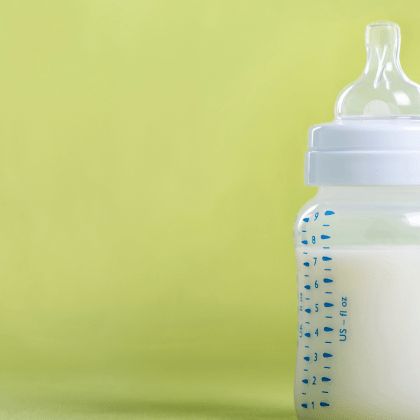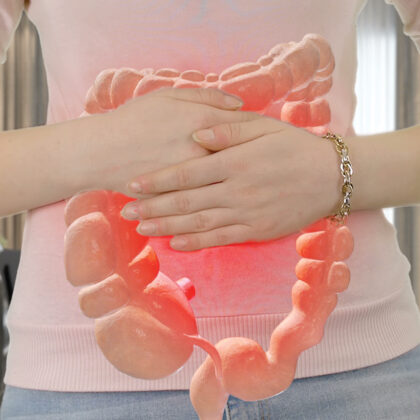Drinking for Two: Breastfeeding the Developing Baby’s Gut Microbiota
The December Nutrition Society Paper of the Month is from Gut Microbiome and is entitled “Seeding and feeding milestones: the role of human milk microbes and oligosaccharides in the temporal development of infant gut microbiota” – co-authored by Martha F. Endika, David J. M. Barnett, Cynthia E. Klostermann, Noortje Kok, Henk A. Schols, Arjen Nauta, Ilja C. W. Arts, John Penders, Koen Venema, Hauke Smidt
When a mother breastfeeds her baby, she supports both the development of her child and the microbes in the child’s gut. Breast milk contains unique carbohydrates called human milk oligosaccharides (HMOs) that cannot be digested by the baby. Instead, these HMOs reach the gut to be used by the gut microbes. Bifidobacteria, among other gut microbes, help degrade HMOs and produce beneficial product in the baby’s gut.
In our study, we looked at the composition of HMOs in breast milk samples and the composition of gut bacteria in the baby’s stool collected in the Baby Carbs study. A total of 23 mother-baby pairs in the Netherlands participated in the Baby Carbs study, providing samples at one, three, and nine months after birth. From the breast milk samples, we observed that each mother has a personal HMO profile, with variations in the types of HMOs present due to genetics that determine secretor status. Although HMOs in a group of secretor mothers showed more variation than in non-secretor mothers, the concentration of total HMOs was similar between these two groups.
As the baby grows, solid food is introduced into their diet during the weaning period, and they receive less breastmilk over time. During this period, the microbes in the baby’s gut are exposed to important changes in the nutrients available in the gut environment. We observed that the gut microbiota changes at nine months after birth were characterised by the presence of bacterial groups known to degrade complex carbohydrates that escape digestion in the baby’s upper intestinal tract, such as starches from cereals and pectin from fruits.
Besides supplying HMOs, breastfeeding is one of the first sources of microbes for the baby’s gut. Ingested breast milk microbes are speculated to play an important role in seeding the gut. Interestingly, breast milk samples collected at nine months after birth also contained bacteria from the baby’s mouth. At this age, some babies already have their first teeth, which can serve as surfaces for bacteria to grow. In our study, we identified bacterial groups shared between breast milk and the corresponding baby’s stool. Particularly, we observed the potential influence of milk microbes on the assembly of the microbes in baby’s gut at one month after birth. The findings in this study highlight the important role of breastfeeding as a source of microbes and as a source of HMOs that support the growth of beneficial microbes in baby’s gut throughout different stages of lactation.
This paper is freely available for one month, click here to read it.
Nutrition Society Paper of the Month
Each month a paper is selected by one of the Editors of the five Nutrition Society Publications (British Journal of Nutrition, Public Health Nutrition, Nutrition Research Reviews, Proceedings of the Nutrition Society and Journal of Nutritional Science). This paper is freely available for one month.






